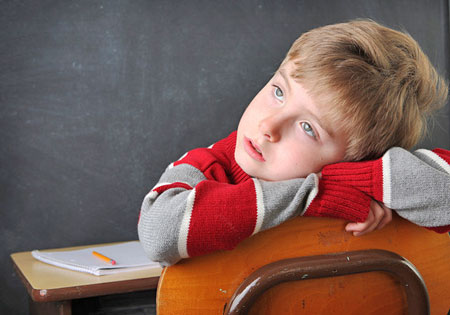|
|
|
from MarketWatch Website
hoarding and caffeine withdrawal
But the Diagnostic and Statistical Manual of Mental Disorders, or DSM for short, is an exception. The American Psychiatric Association released its revised fifth edition of the manual, which serves as the official authority on mental health diagnoses (and related insurance claims), on Wednesday.
The DSM-5, which informs the way psychiatrists prescribe drugs, comes with 15 new diagnoses - including hoarding and cannabis withdrawal - while eliminating and combining others.
(Until the 1970s, the manual listed homosexuality as a disorder.)
While psychiatrists considered suggestions from medical professionals as well as the public, the updates have already sparked debate and criticism.
But the handbook also sheds light on the current state of the world’s mental health.
The proliferation of medical marijuana has led to a clinical diagnosis of “cannabis withdrawal,” for example. Meanwhile, in a special trial section of the DSM-5 for conditions needing further research, there is now “Internet gaming disorder,” along with suicide-related disorders due to “increased recognition of suicidal ideation.”
Here’s the thinking behind the DSM-5’s
15 new mental disorders.
Indeed, while symptoms of this disorder, which must date back to childhood, include “inappropriate responses in conversation” and difficulty communicating, the diagnosis can only be made after autism spectrum disorders have been ruled out, according to the APA.
These problems often hamper people’s
social lives, academic careers and job performance, and the
diagnosis, known as SCD for short, is intended to bring their issues
“out of the shadows” and help them get appropriate treatment,
according to the fact sheet.
The new diagnosis is designed to help families and children who,
(The new disorder was mentioned in an appendix of the DSM-4 as a condition needing further study.)
Other critics worry that the diagnosis could allow people to use common and mundane problems like minor menstrual cramps as medical excuses. But researchers for the DSM-5 found justification for listing the disorder, which affects 2% to 5% of premenopausal women, according to an article published in the American Journal of Psychiatry in May 2012.
Symptoms include depression, “feelings
of hopelessness” and bloating sensations at specific times during a
woman’s menstrual cycle - severe enough to interfere with people’s
ability to function at work or school.
But thanks to the DSM-5’s inclusion of “hoarding disorder” as a standalone diagnosis, doctors may be able to treat the condition 'with a pill.'
There is now adequate evidence to confirm the “diagnostic validity” of hoarding, which is characterized by,
The newly added diagnosis is listed under obsessive-compulsive disorders, though the APA admits that there is not enough data to say whether hoarding is truly related to OCD or another mental illness.
Still, hoarding may have underlying neurobiological causes, which may mean that it can be treated with medication.
Indeed, some DSM critics believe the creation of hoarding disorder could be driven by pharmaceutical interests:
A controversial addition, the new diagnosis directly reflects our increasing dependence on caffeine, from the proliferation of Starbucks outlets to the growing array of non-coffee energy drinks and caffeine-injected alcoholic beverages:
(Caffeine withdrawal was included in an appendix of the DSM-4 as a condition needing further study.)
But some psychiatrists worry that caffeine withdrawal may be an easy way to clinically label symptoms such as headaches, sleep disturbances and moodiness, at the cost of missing a serious pathological disorder.
As marijuana has become available to buy legally and for medical purposes in more states, psychiatrists have also noted withdrawal symptoms in people who frequently smoke marijuana and then quit.
A study of 384 lifetime cannabis smokers, conducted in partnership with the National Institutes of Health and published in 2012, found that more than 40% of participants met the withdrawal criteria in the DSM-5.
Only in recent years have medical experts recognized that marijuana can be associated with drug withdrawal, so the DSM until now excluded the condition,
But the researchers identified several
cannabis withdrawal symptoms that interfered with people’s ability
to function normally, including loss of appetite, nightmares and
“imagining being stoned (cravings).”
The disorder can be triggered by other skin irregularities like acne or bug bites, according to a 2011 paper from the University of Cincinnati College of Medicine that proposed including the disorder in the DSM.
The condition can be associated with other disorders involving compulsive eating, buying and stealing, the researchers wrote.
The DSM-5 added,
With nearly 70% of Americans overweight or obese according to the Centers for Disease Control and Prevention, the manual distinguishes between problems with weight versus mental health, noting that,
(The new disorder was included in an appendix of the DSM-4 as a condition needing further study.)
People with this disorder frequently eat a large amount of food very quickly, even when they’re not hungry, and often when they are alone to avoid embarrassment, according to the APA. Binge Eating Disorder is not to be confused with bulimia nervosa, which involves, in addition to binge eating, purging behaviors like vomiting.
The revised manual stipulates that
binging or purging just once a week qualifies for the diagnosis,
rather than biweekly.
The phenomenon became particularly problematic for Birbiglia after he jumped through a second-story hotel window in a dream about escaping a missile, landing him in the emergency room with glass wounds. (The disorder differs from typical sleepwalking in that people with REM behavior disorder usually remember what they were doing in the dream.)
Now, the disorder, which the DSM previously included ambiguously under parasomnia, gains official recognition by the clinical psychiatry community in addition to Hollywood.
The diagnosis, which the APA says is fully supported by research evidence, is often preceded by dream enactment episodes resulting in injury to the person or the partner with whom they share a bed.
In treating the condition, doctors may
recommend removing sharp and dangerous objects from the bedroom and
cushioning the area around the bed.
But scientific and genetic research have advanced the medical knowledge of the disorder, which is now also identified as Willis-Ekbom disease, since the previous version of the DSM.
While about 2% to 3% of adults are severely affected by it, up to 10% of people in the U.S. may have it, according to the Willis-Ekbom Disease Foundation (formerly the Restless Legs Syndrome Foundation).
By giving official diagnostic status to
the disorder, which was previously classified as a “not otherwise
specified” form of dyssomnia, the DSM-5 may promote more precise
diagnoses and treatment of restless legs syndrome, psychiatrists
say.
The new diagnoses also allow psychiatrists to distinguish between different levels of dementia’s severity.
Still, the “threshold” between mild and major neurocognitive disorder “is inherently arbitrary,” the APA admits. (The newly added mild version was mentioned in an appendix of the DSM-4 for conditions needing further study.)
But by differentiating between them, the
DSM-5 could pave the way for the diagnosis and treatment of “less
disabling” cognitive impairment that could be nonetheless
problematic for people and their families, according to the APA.
While children with disinhibited social engagement disorder can be inattentive and impulsive, the disorder may stem from inadequate care-giving and neglect. This disorder was previously grouped with reactive attachment disorder, children who have it may not actually lack attachments, according to the APA.
The separate classification allows for
different clinical interventions and treatment plans.
The growing share of the population with diabetes and cardiovascular disease, which studies have shown to increase the risk of central sleep apnea and other breathing-related sleep disorders, may make it more important to precisely identify the problems.
But the medical community has also learned much more about these conditions since the previous DSM edition, enabling the new diagnoses:
|



